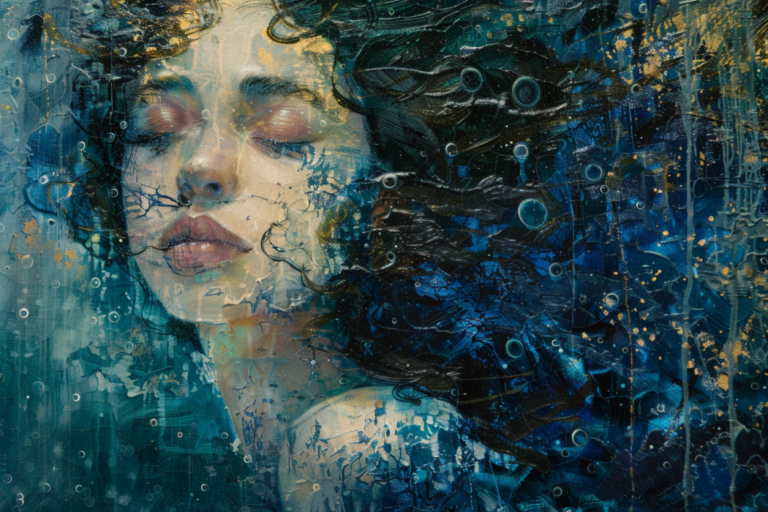Feather Symbolism & Meaning: Ultimate Guide
Feathers symbolize lightness, flight, and freedom. They teach us the importance of embracing our innate grace and soaring beyond earthly limitations. Feathers reminds us of the interconnectedness of all beings in the universe.
Let’s explore the symbolism of feather!
What Do Feathers Symbolize?
1. Freedom

Feathers are powerful symbols of freedom and the spirit’s desire to rise above limits. Just as birds soar across wide skies, feathers remind us that we too can break free from fear, expectations, or the routines that hold us back.
They represent emotional and mental liberation, not just physical movement. A single feather can speak volumes: it whispers of independence, new paths, and the courage to live on your own terms. When we see a feather, we’re reminded that we we’re meant to fly.
🦅 Read More: Symbols of Freedom Around The World
2. Spirituality
Beyond helping birds fly, feathers carry a deeper meaning of spiritual ascension and letting go. As birds move effortlessly through the sky, their feathers symbolize trust in life’s natural rhythm and the power of surrender.
In spiritual practices around the world, feathers are used to cleanse energy, calm the mind, and open space for inner clarity. They are believed to carry messages from higher realms, helping us release what no longer serves us. The lightness of a feather reflects the lightness we gain when we forgive, heal, and rise.
💨 Read More: Wind Symbolism and Meaning
3. Connection With The Heavens
Feathers are often seen as signs from above. Many people believe that finding a feather, especially in an unexpected place, means that a loved one or spiritual guide is near.
In Christianity, Islam, and Judaism, angels are shown with feathered wings, symbolizing protection, divine presence, and guidance from higher realms. A feather can feel like a small but meaningful gift from the universe, reminding us that we’re being watched over—even in our quietest or darkest moments.
4. Grace

Peacock feathers are especially rich in symbolism, representing beauty, grace, and self-expression. In many Asian cultures, especially in India and Indonesia, the peacock’s dance is part of traditional ceremonies and classical art.
The dancer’s movement mirrors the bird’s elegance, while the feathers themselves are thought to offer spiritual insight and protection. Their eye-like patterns symbolize awareness, vision, and divine wisdom—gently reminding us to walk with confidence and inner beauty.
5. Protection
Feathers are often believed to carry protective energy, especially in cultures that see birds as messengers of the sky. Because they come from creatures that fly close to the heavens, feathers are thought to hold divine blessings.
Used in rituals and worn as amulets, feathers are seen as shields against negative energy. They protect not with force, but with softness and light. A single feather can serve as a reminder that we are guarded by forces bigger than ourselves.
6. Wisdom
Birds are among the most intelligent creatures in the animal world. Species like ravens, crows, and parrots are known for solving problems, using tools, and showing advanced memory and social skills.
🐦⬛ Read More: Crow symbolism across cultures
7. Transition
Feathers also symbolize life changes—moving from one phase to the next. In Native American culture and many other traditions, feathers are used in ceremonies that mark growth, healing, or major turning points in life.
They reflect the soul’s journey through hardship, learning, and rebirth. Just as a bird molts old feathers to make room for new ones, we too must release what no longer fits to transform into who we’re meant to become.
💪 Read More: Symbols of Strength Across Cultures
Feather Symbolism Across Cultures And Community
1. Feather symbolism in Native American cultures

In Native American traditions, feathers, especially eagle feathers, carry deep spiritual meaning. The eagle is honored as a sacred bird because it flies high in the sky, closer to the heavens. Its feathers are believed to carry prayers, offer protection, and connect people to the spirit world.
Eagle feathers were often given to warriors as a high honor, usually after acts of bravery or service. But not everyone could wear them. Only those approved by tribal leaders such as warriors, chiefs, or respected individuals could display them, often in headdresses. While most recipients were men, some tribes recognized women warriors too. Still, traditional war bonnets were usually reserved for men, except in modern reenactments or performances.
2. Feathers Symbolism in Greek Mythology 🪶
In ancient Greek myths, feathers have special meanings that teach important lessons. One myth tells the story of Daedalus and his son Icarus. Daedalus was a clever inventor who made wings out of feathers and wax to escape from an island. These wings symbolize freedom and the desire to go beyond what is possible.

Daedalus warned Icarus not to fly too high, or the sun would melt the wax. Icarus ignored him, flew too close, and the feathers fell apart. He crashed into the sea. This story reminds us that while dreams and freedom are important, they need balance and care. Feathers in this myth symbolize our hopes but also the danger of going too far, too fast.
3. Feather symbolism in Egyptian mythology
In ancient Egypt, the goddess Ma’at stood for truth, balance, and justice. When someone died, their heart was weighed against Ma’at’s feather in the Hall of Judgment. If the heart was as light as the feather, the soul could enter the peaceful afterlife. If not, the soul faced destruction.
This feather became a symbol of living a good, honest life. It showed that your actions mattered, and that fairness was a divine rule. Even today, Ma’at’s feather reminds us of truth, morality, and the idea that we’re accountable for how we treat others.

The idea appeared in pop culture too, in The Midnight Gospel, a character’s soul is repeatedly weighed against a feather in a symbolic journey of self-realization. He slowly learns that harming others is harming himself, and only by growing in compassion is he finally freed.

Feathers also appeared in Egyptian art. Gods and goddesses wore feathered crowns, symbolizing divine authority, lightness, and their link to higher realms.
4. Feather symbolism in Norse mythology
In Norse myths, feather symbolism shows up in stories of powerful women and gods. The Valkyries—warrior maidens who choose who lives and dies in battle—sometimes wore feathered cloaks or wings. These feathers gave them the power to fly between worlds, guiding souls to the afterlife.
The goddess Freya owned a magical cloak made of falcon feathers. When she wore it, she could turn into a bird and fly across the sky. She even lent this cloak to other gods, like Loki, who used it during rescue missions. Feathers in Norse stories represent speed, transformation, and the connection between the mortal and divine worlds.

5. Feather symbolism in Chinese mythology
In Chinese culture, the phoenix, or Fenghuang, is one of the most sacred mythical birds. Its colorful feathers symbolize balance, grace, and moral strength. According to ancient texts, each color of its feathers stands for a different virtue: red for kindness, green for fairness, yellow for wisdom, black for loyalty, and white for respect.
The phoenix doesn’t harm other creatures. It drinks only morning dew and lives peacefully. One legend tells how it saved other birds during a famine by sharing its hidden food supply. In return, the birds gave the phoenix their most beautiful feathers. That’s how it earned its shimmering coat and became their leader.
6. Feather symbolism in Celtic and Germanic Culture
Long ago, Celtic and Germanic tribes wore feathers in battle to show strength, bravery, and honor. These feathers were given by tribal leaders and held sacred meaning—like medals of courage.
Eagle feathers were especially valued. But when the Roman Empire started using the eagle as a symbol of its power, the meaning changed. To many tribes, the eagle lost its sacred status and began to represent oppression.
Feathers were so important that pretending to have earned one without doing so was seen as a serious offense—punishable by tribal law, sometimes even by death.
As time passed and Christianity spread across Europe, the old customs faded. Feathers lost their spiritual power in daily life, but their stories remain, reminding us of a time when they stood for courage, truth, and sacred duty.
Feather Symbolism Of Different Birds
1. Eagle Feather
The eagle is known for its strength, keen vision, and ability to soar to great heights. Therefore, the feather of an eagle symbolizes strength, courage, and spiritual connection. Eagles are associated with wisdom and the ability to have a broad perspective, which translates into the feather’s symbolism.
2. Owl Feather
Owls are renowned for their wisdom and nocturnal vision. Their feathers symbolize wisdom, intuition, and the ability to see beyond the surface. Owls have a mysterious aura, and their feathers are seen as conduits of deep knowledge and the ability to navigate the unseen realms.
3. Peacock Feather
Peacocks are famous for their vibrant and iridescent feathers, which are associated with beauty, prosperity, and good luck. The feathers symbolize self-expression, confidence, and the ability to display one’s true colors. In many cultures, peacock feathers are believed to bring positive energy and fortune.
4. Hawk Feather

Hawks are known for their sharp vision and focused hunting skills. Their feathers symbolize focus, clarity, and the ability to see the bigger picture. Hawks are swift and decisive, reflecting the power of observation and quick action. Their feathers carry these attributes.
5. Swan Feather
Swans are graceful creatures associated with purity, elegance, and transformation. Their feathers symbolize inner beauty, serenity, and the ability to navigate emotional depths with grace. Swans undergo a transformation from an ungainly cygnet to a magnificent adult, adding to the symbolism of growth and transformation.
6. Hummingbird Feather
Hummingbirds are small, agile birds known for their vibrant colors and rapid wing movements. Their feathers symbolize joy, playfulness, adaptability, and the pursuit of happiness. Hummingbirds remind us to find sweetness in life, embrace change, and savor each moment.
7. Raven Feather
Ravens have deep associations with magic, mystery, and spiritual insight. Their feathers symbolize transformation, the ability to tap into hidden knowledge, and connection between the physical and spiritual realms. Ravens are often seen as messengers from the spirit world, carrying the symbolism in their feathers.
8. Dove Feather
Doves are symbols of peace, love, and harmony. Their feathers represent purity of heart, divine blessings, and the presence of spiritual guidance in times of peace and serenity. Doves are known for their gentle nature, and their feathers carry the message of tranquility and compassion.’
9. Falcon Feather
Falcons are swift and powerful birds of prey known for their agility and keen perception. Their feathers symbolize swiftness, clear vision, and the ability to take decisive action. Falcons represent the pursuit of goals, the power to overcome obstacles, and the strength to soar to new heights.
10. Flamingo Feather
Flamingos are known for their elegant and graceful movements. Their long, slender necks and gracefully curved bodies exude a sense of poise and beauty. Flamingo feathers symbolize gracefulness in both physical appearance and actions. Their stunning shades of pink, coral, and orange also symbolize joy, liveliness, and creativity.
Conclusion
In short, feather symbolism is rich and meaningful across many cultures. Feathers often stand for freedom, spirituality, and transformation. They are seen as a link between the earth and the sky, or even between humans and the spirit world.
Because feathers help birds fly, they also represent rising above challenges and reaching higher levels of awareness. In many traditions, feathers are believed to bring protection, wisdom, and messages from ancestors or the divine.







2 Comments
Comments are closed.